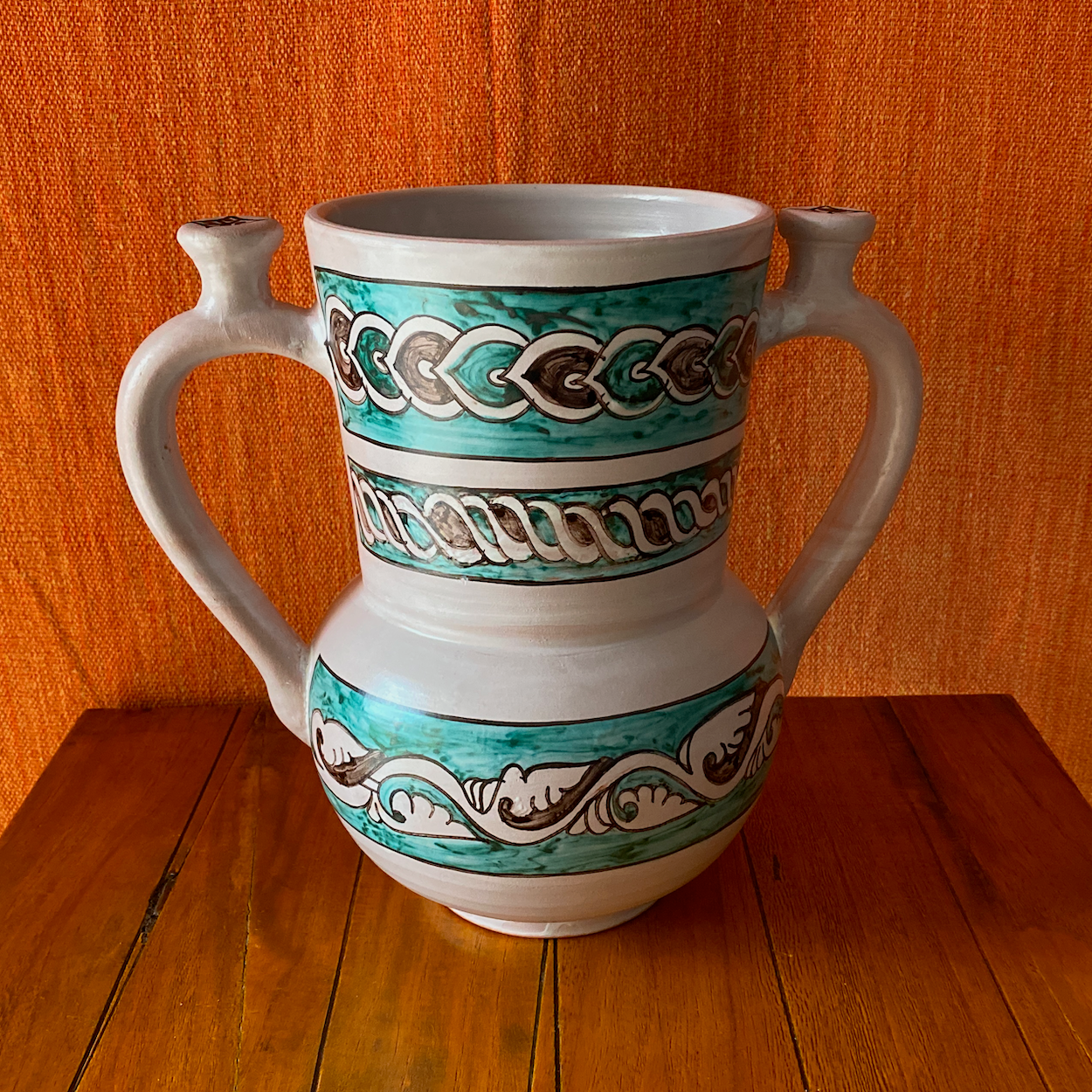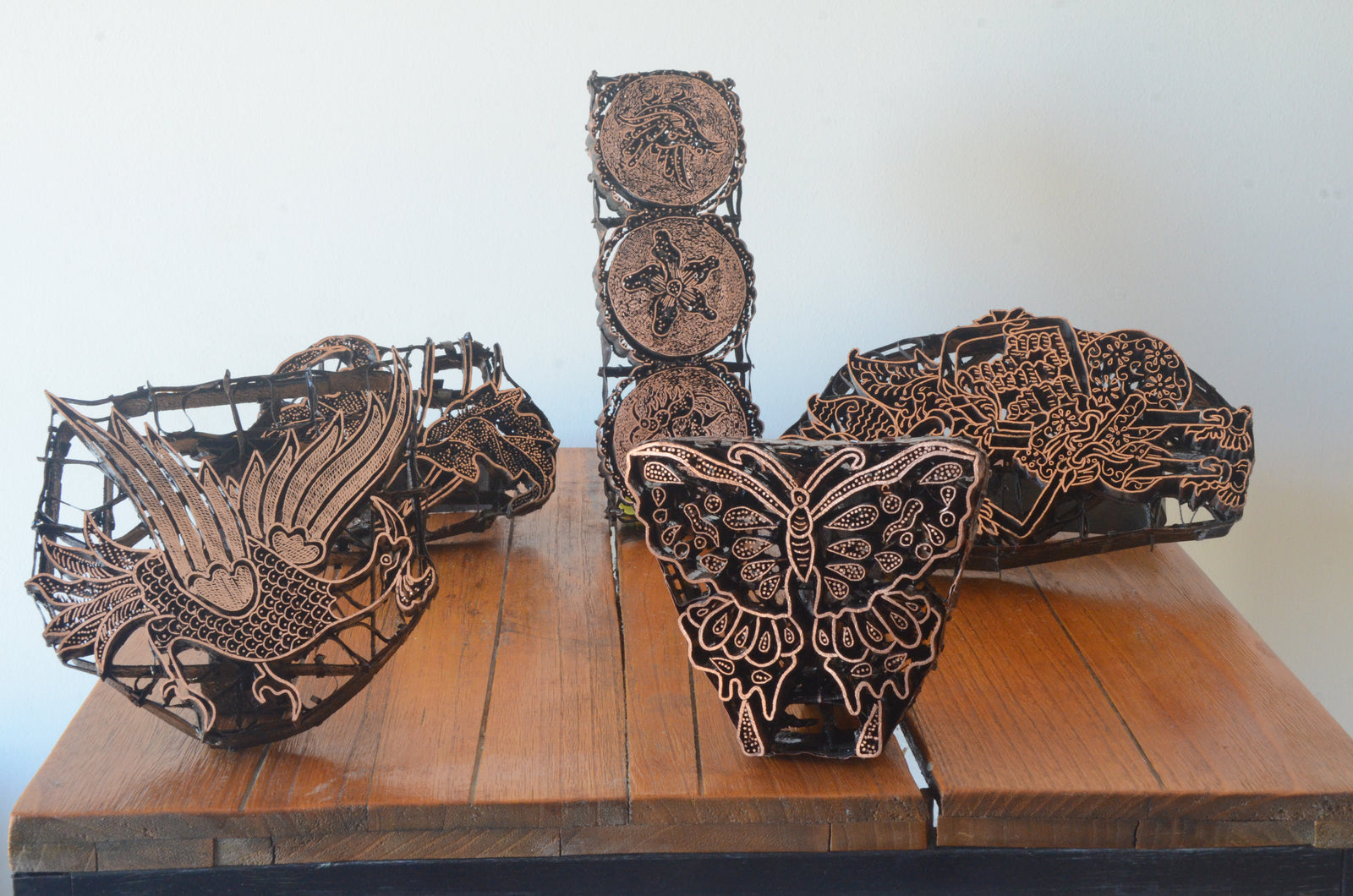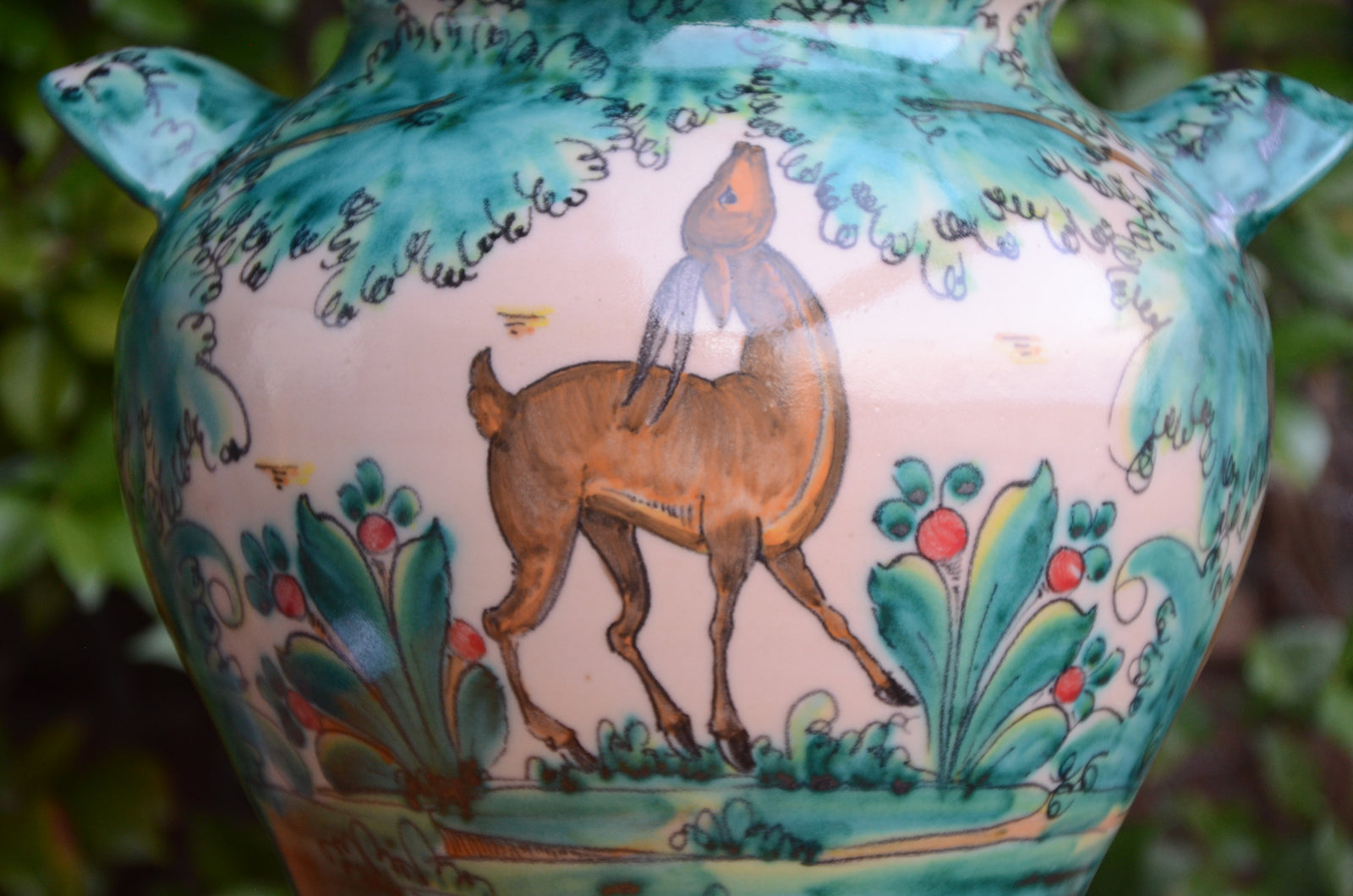
The green and manganese ceramics, purple green or Elvira earthenware, groups various pottery pieces whose main characteristic is the contrast between the black-purple of manganese and the green of copper with the white base paste or engalba. This white color of the background is produced by the tin dioxide that covers the piece in an opaque milky layer ("bisque"), shiny when the lead glaze is added.
It takes place in Al-Andalus during the independent emirate and especially in the caliphate (10th century). The palatine city of Medina Azahara in Córdoba, is considered its main focus. From here it has spread to many parts of the Iberian peninsula, and even outside the peninsula such as Italy and France. Of course this pottery has clear influences from pottery from Syrian Persia and Byzantium and Tunisia.
The main colors used are directly connected with Islamic culture
White.- Clarity, loyalty, power.
Black.- Austerity, power, dignity.
Green.- Happiness (color of the Arab people).
The Umayyad dynasty of the independent Emirate and later Caliphate of Córdoba appropriates this chromatic game to represent its political-cultural fullness:
White.- Color of the Umayyad dynasty.
Green.- Color of the Prophet Muhammad
Black.- Power and dignity attributed to the caliphal throne
The iconographic motifs of these ceramics are varied. Generally, it is believed that Islam expressly prohibits the representation of human and animal figures. It is not true. Figurative representations are absent in religious buildings and objects of worship. But not in civil works. As an example how are the ceramics for civil use. Images of a magical naturalism, alive and full of movement, gazelles, horses, hares, peacocks, doves, etc.
They stand out and constitute an innovation in Islamic ceramics, the so-called epigraphic motifs where the blessing of heaven is invoked "baraka", a term that we can translate as "magic", "divine protection"; or where it stands out, with the word al-Muluk (power of God) but which in caliph pottery acquires the meaning of will, power and empire.
But for any Muslim artist, the geometric interlacing is undoubtedly the form that most satisfies him on the intellectual plane, circles, chess squares, festoons or lunettes are recurring motifs in decoration as are plant motifs such as leaves, palms, the lotus flower representing eternal life or the thorny acanthus.
Decorative patterns are obtained by repeating simple interlocking or overlapping elements. Together with the taste for symmetry, a dynamic and harmonious effect is achieved. The detail does not prevail over the whole. There is no tension between motives, only balance. The infinite repetition of the themes is a metaphor for eternity that fills everything and a way of capturing the mutability of the universe.
Comments will be approved before showing up.

